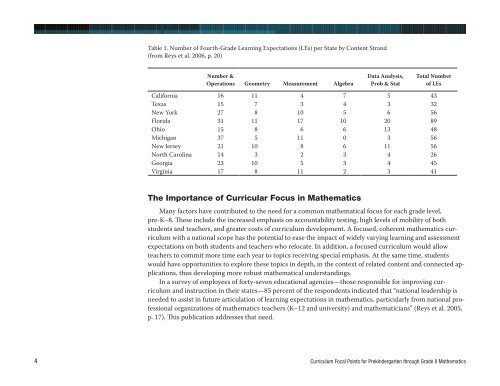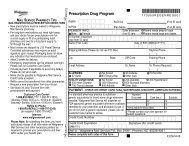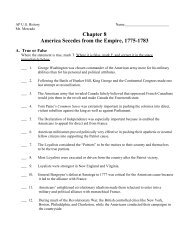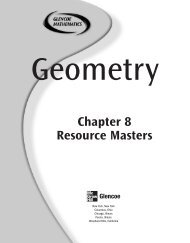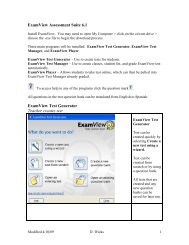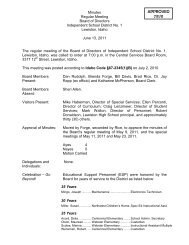Curriculum Focal Points
Curriculum Focal Points
Curriculum Focal Points
Create successful ePaper yourself
Turn your PDF publications into a flip-book with our unique Google optimized e-Paper software.
Table 1. Number of Fourth-Grade Learning Expectations (LEs) per State by Content Strand<br />
(from Reys et al. 2006, p. 20)<br />
Number &<br />
Operations Geometry Measurement Algebra<br />
Data Analysis,<br />
Prob & Stat<br />
Total Number<br />
of LEs<br />
California 16 11 4 7 5 43<br />
Texas 15 7 3 4 3 32<br />
New York 27 8 10 5 6 56<br />
Florida 31 11 17 10 20 89<br />
Ohio 15 8 6 6 13 48<br />
Michigan 37 5 11 0 3 56<br />
New Jersey 21 10 8 6 11 56<br />
North Carolina 14 3 2 3 4 26<br />
Georgia 23 10 5 3 4 45<br />
Virginia 17 8 11 2 3 41<br />
The Importance of Curricular Focus in Mathematics<br />
Many factors have contributed to the need for a common mathematical focus for each grade level,<br />
pre-K–8. These include the increased emphasis on accountability testing, high levels of mobility of both<br />
students and teachers, and greater costs of curriculum development. A focused, coherent mathematics curriculum<br />
with a national scope has the potential to ease the impact of widely varying learning and assessment<br />
expectations on both students and teachers who relocate. In addition, a focused curriculum would allow<br />
teachers to commit more time each year to topics receiving special emphasis. At the same time, students<br />
would have opportunities to explore these topics in depth, in the context of related content and connected applications,<br />
thus developing more robust mathematical understandings.<br />
In a survey of employees of forty-seven educational agencies—those responsible for improving curriculum<br />
and instruction in their states—85 percent of the respondents indicated that “national leadership is<br />
needed to assist in future articulation of learning expectations in mathematics, particularly from national professional<br />
organizations of mathematics teachers (K–12 and university) and mathematicians” (Reys et al. 2005,<br />
p. 17). This publication addresses that need.<br />
<br />
<strong>Curriculum</strong> <strong>Focal</strong> <strong>Points</strong> for Prekindergarten through Grade 8 Mathematics


